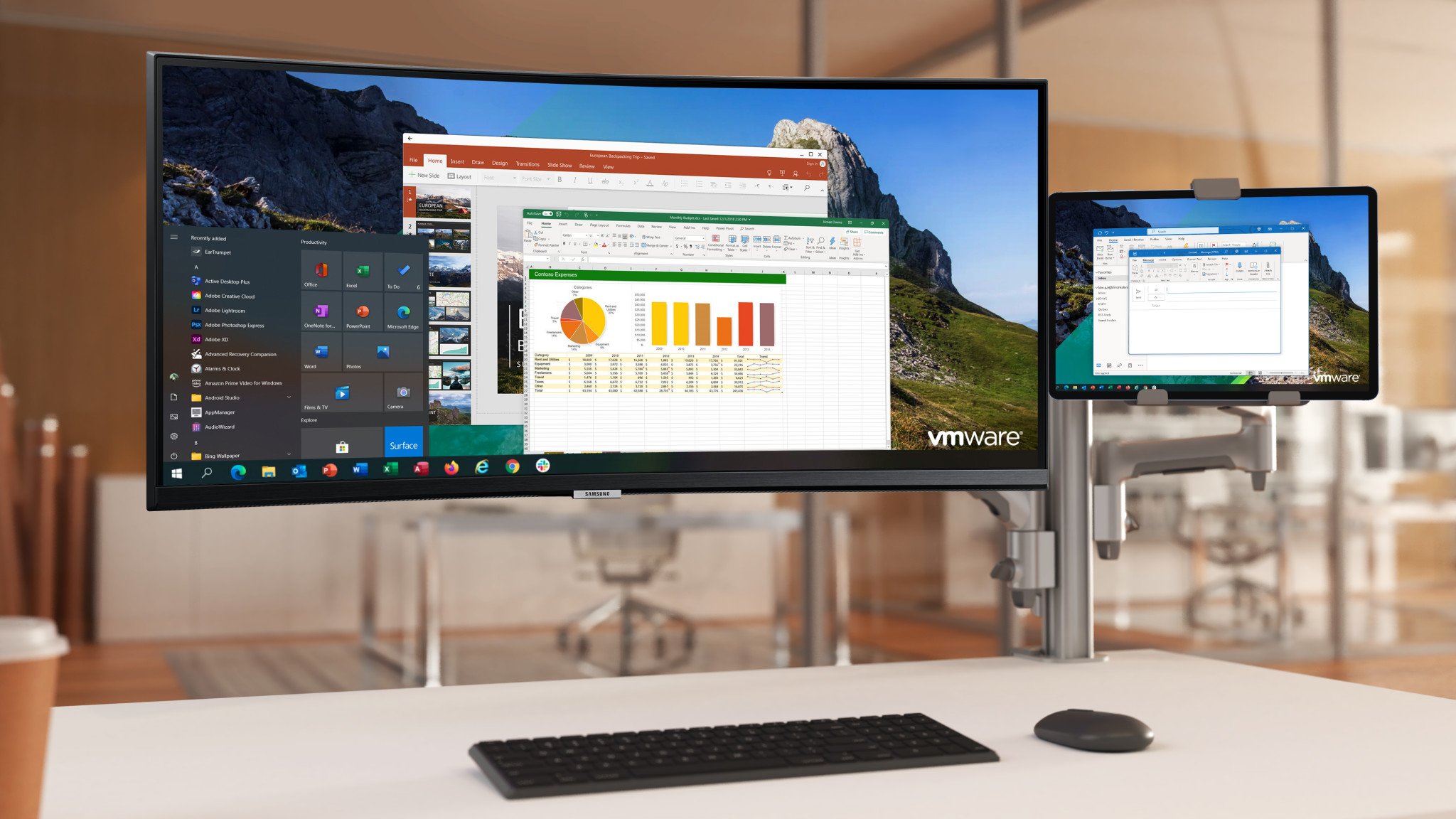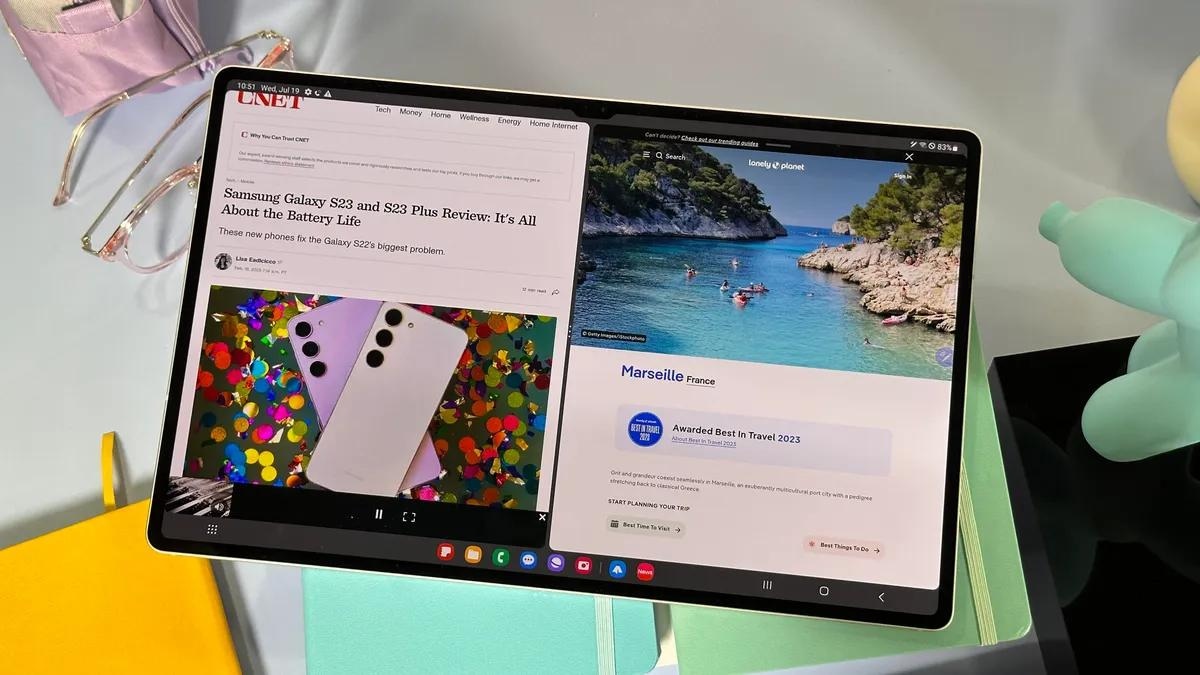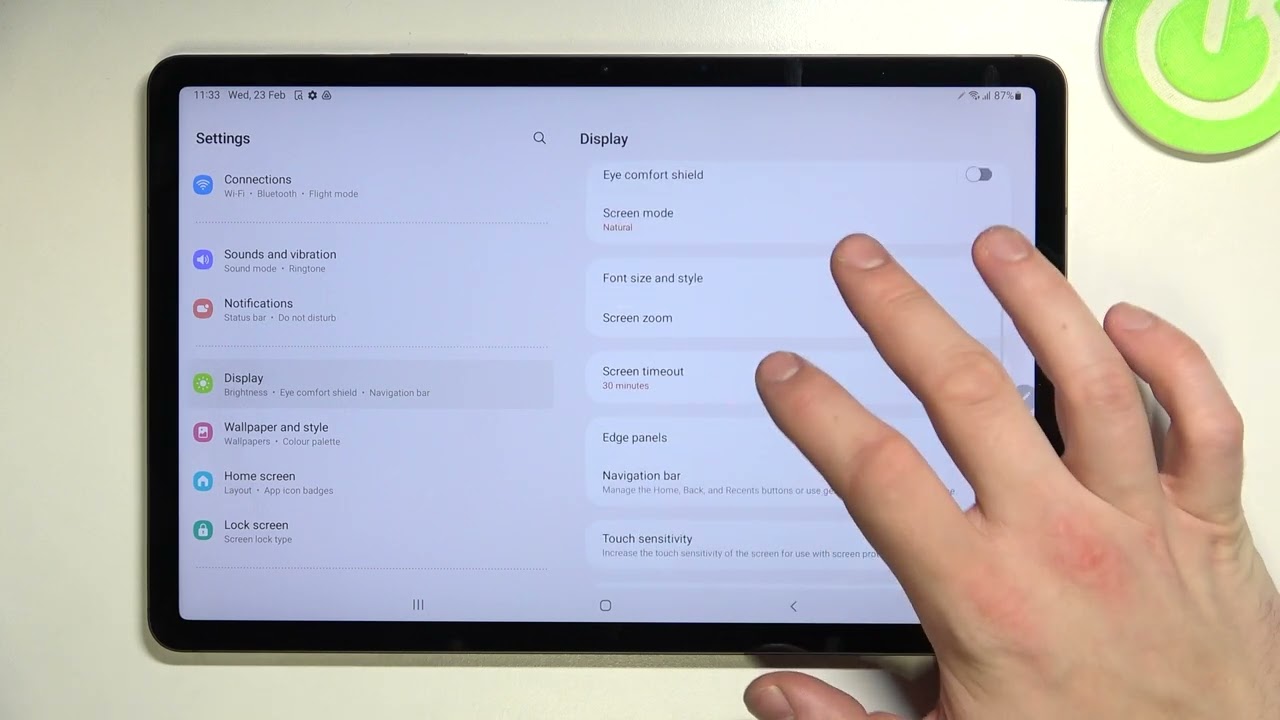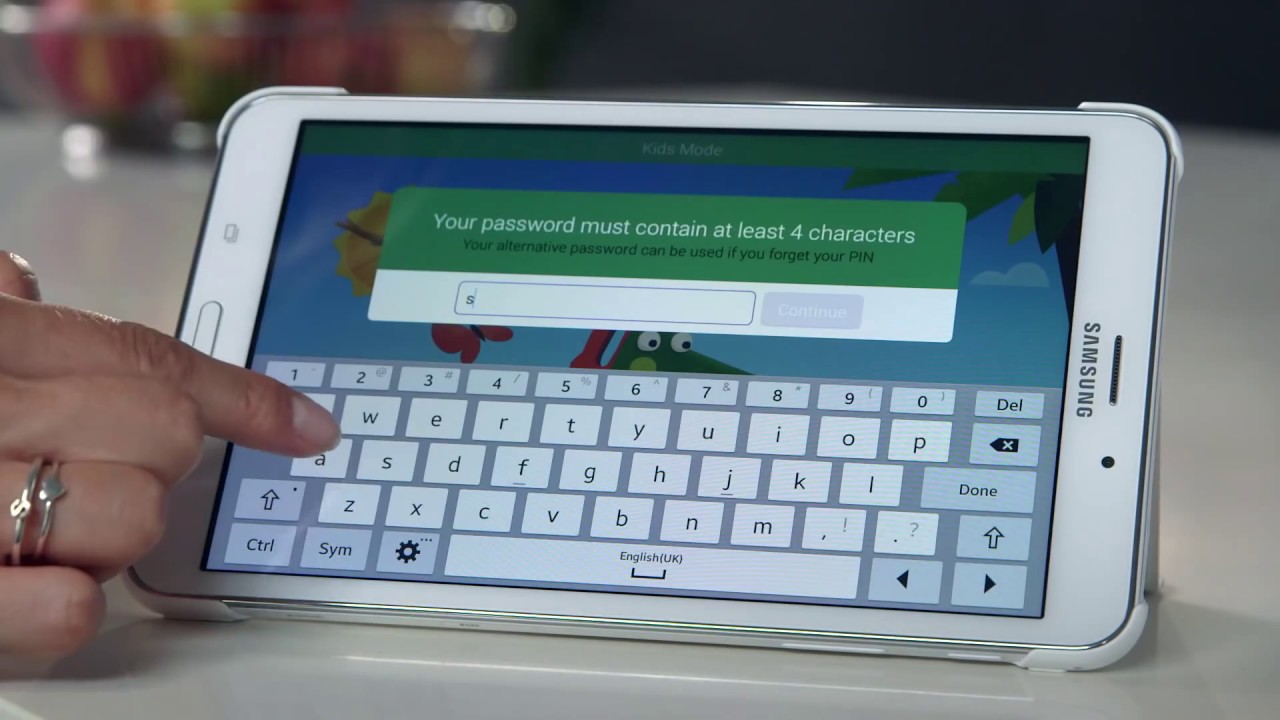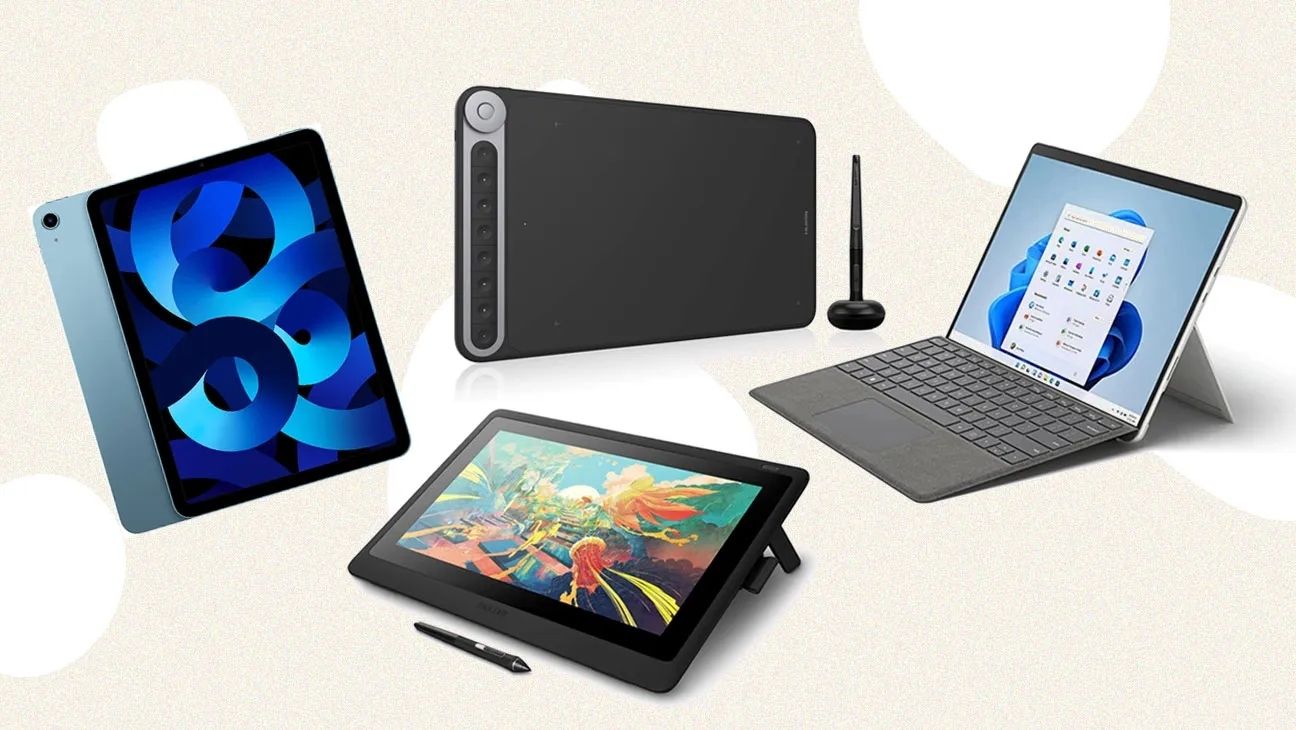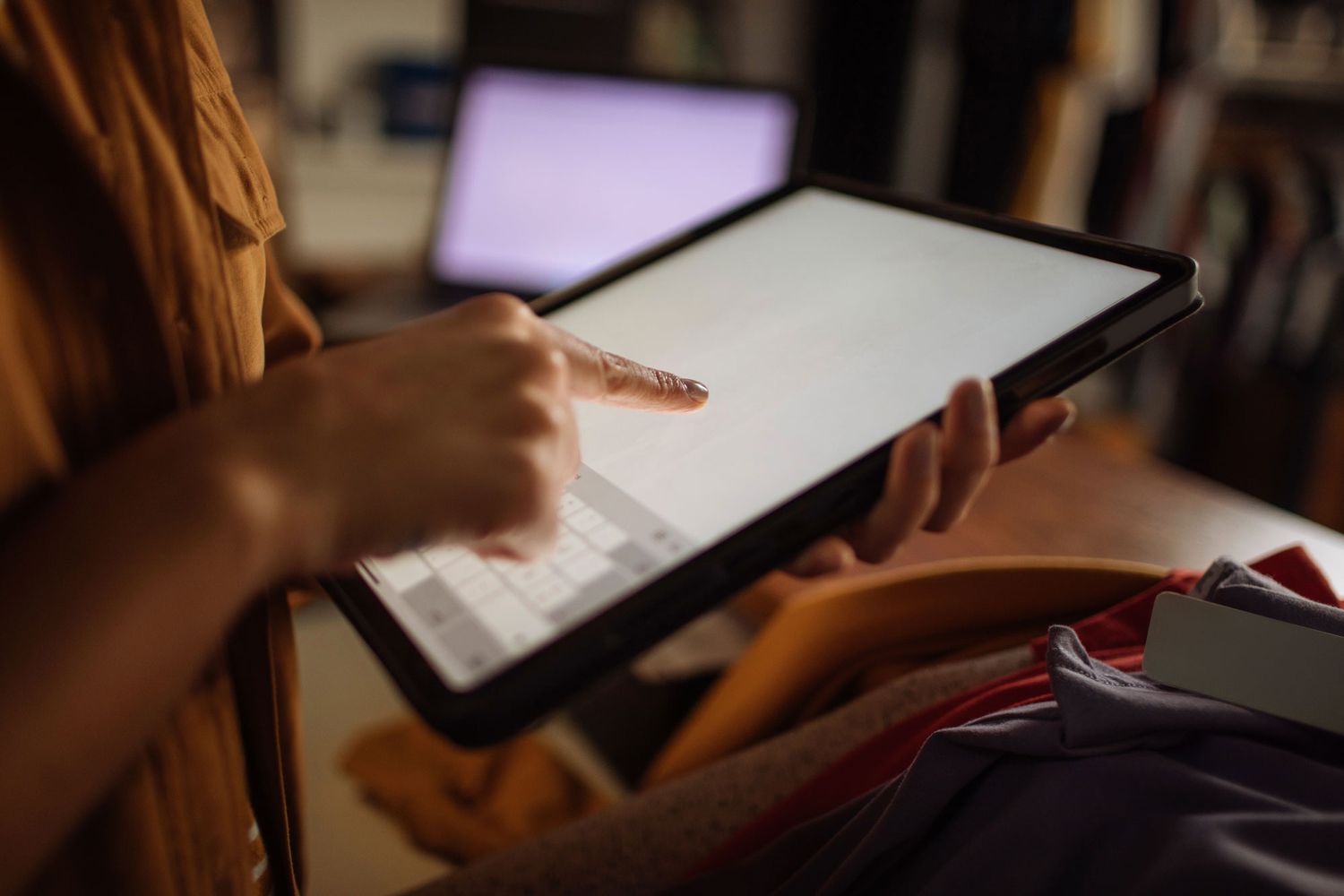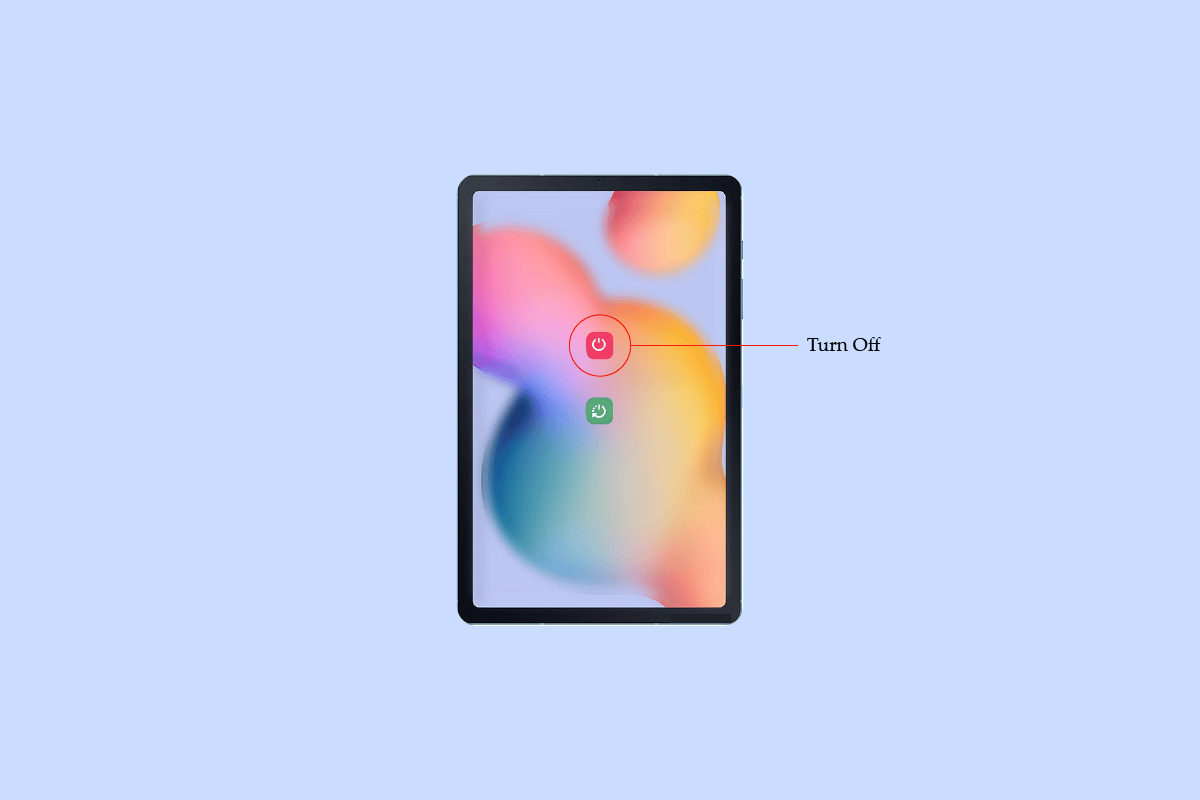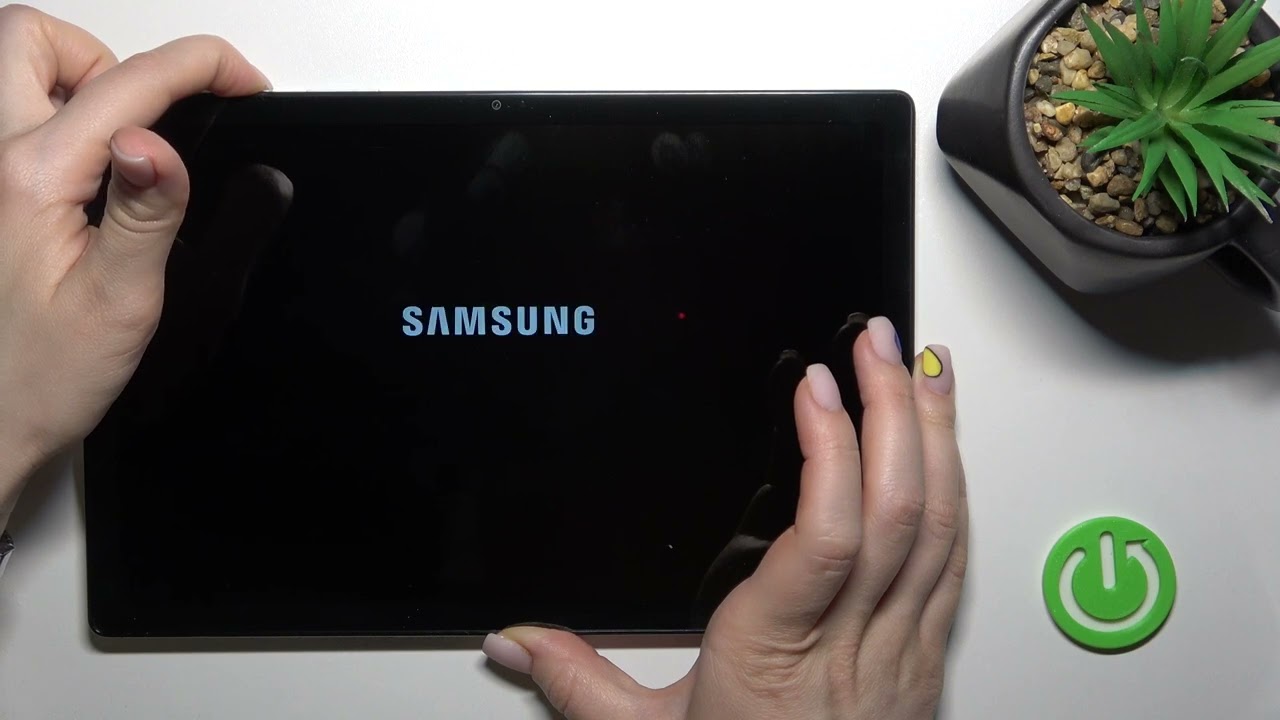Introduction
Welcome to the world of multi-tasking and increased productivity, where your trusty Samsung tablet can serve as a second monitor for your computer. Gone are the days of being confined to a single screen. With this innovative feature, you can now enjoy the benefits of a dual monitor setup without the need for additional hardware.
Using your Samsung tablet as a second monitor offers a wide array of advantages. Not only does it provide you with more screen real estate to work with, but it also allows for improved multitasking and enhanced efficiency. Whether you’re a student, professional, or simply someone who loves technology, this functionality can greatly enhance your computing experience.
Before you dive into the world of using your Samsung tablet as a second monitor, there are a few steps you need to take to prepare both your tablet and your computer for this setup. In this guide, we will walk you through the process of connecting your tablet to your computer and setting up the display settings to ensure optimal performance.
Whether you’re using a Windows PC or a Mac, the steps are similar but may vary slightly. By following this guide, you’ll be up and running with your Samsung tablet as a second monitor in no time.
So, let’s get started and explore the exciting possibilities of using your Samsung tablet as a second monitor!
Benefits of Using a Samsung Tablet as a Second Monitor
Using a Samsung tablet as a second monitor offers a multitude of benefits that can greatly enhance your productivity and overall computing experience. Here are some key advantages to consider:
- Increased Screen Real Estate: One of the primary benefits of using a Samsung tablet as a second monitor is the added screen space it provides. This gives you more room to work with, allowing you to easily view multiple windows, applications, or documents simultaneously. Whether you’re editing photos, coding, or working on a project, the extra screen space can greatly improve your workflow.
- Improved Multitasking: With a second monitor, you can effortlessly juggle multiple tasks at once. For example, you can have your main task on your computer screen while using the tablet as a secondary display for displaying reference material, monitoring social media feeds, or keeping track of important documents. This allows you to work more efficiently and reduces the need to constantly switch between windows.
- Enhanced Collaboration: If you often collaborate with others, using a Samsung tablet as a second monitor can be a game-changer. It enables you to easily share your screen with colleagues, clients, or collaborators, making it simpler to present ideas, share information, or conduct virtual meetings. The tablet’s touch screen capabilities can also be useful for interactive presentations or brainstorming sessions.
- Mobile Flexibility: The portability of a Samsung tablet allows you to take your second monitor wherever you go. Whether you’re working in a coffee shop, traveling, or attending meetings, you can bring along your tablet and connect it to your laptop for an instant dual monitor setup. This mobility ensures that you never have to compromise on your productivity even when you’re away from the office.
- Cost-Efficient Solution: Using a Samsung tablet as a second monitor is a cost-effective alternative to purchasing an additional monitor. Instead of investing in expensive hardware, you can utilize the tablet you already own to create a dual monitor setup. This not only saves you money but also eliminates the need for extra desk space or clutter.
By harnessing the power of your Samsung tablet as a second monitor, you can significantly enhance your productivity, streamline your workflow, and maximize your screen real estate. Whether you’re a student, professional, or creative individual, this versatile setup opens up a world of possibilities and empowers you to do more with your technology.
Preparing your Samsung Tablet and Computer for Use
Before you can start using your Samsung tablet as a second monitor, there are a few steps you need to take to ensure that both your tablet and computer are ready for the setup. Follow these guidelines to prepare your devices:
- Check device compatibility: Ensure that your Samsung tablet and computer meet the necessary requirements for using the tablet as a second monitor. Typically, tablets running Android 7.0 or later support this functionality. Additionally, make sure that your computer is capable of connecting to an external monitor, either through HDMI, USB, or a wireless connection.
- Install necessary software: Depending on the operating system of your computer, you may need to install specific software or drivers to enable the second monitor functionality. For Windows users, check if your tablet manufacturer provides any required software or drivers. Mac users generally do not require additional software as the functionality is built-in.
- Ensure a stable Wi-Fi or USB connection: The connection between your Samsung tablet and computer can be established either via Wi-Fi or USB. If you plan to use a wireless connection, ensure that both devices are connected to the same Wi-Fi network for seamless communication. Alternatively, if you prefer a wired connection, connect your tablet to your computer using a suitable USB cable.
- Charge your tablet: Before using your tablet as a second monitor, make sure that it is adequately charged. This will prevent any interruptions during prolonged use and ensure that the tablet remains operational throughout your work or entertainment sessions.
- Position your devices: Decide on the setup location for your tablet and computer. Ensure that they are placed in close proximity, allowing for easy connection and viewing. If using a wireless connection, minimize any potential obstructions between the devices to maintain a stable connection.
By following these steps, you can properly prepare your Samsung tablet and computer for utilizing the tablet as a second monitor. This preparation is essential to ensure a smooth setup process and optimal performance during use. Once both devices are ready, you can move on to the next steps of connecting and configuring your tablet as a second monitor.
Connecting your Samsung Tablet to your Computer
Once you have prepared your Samsung tablet and computer, it’s time to establish a connection between the two devices. Follow these steps to connect your tablet to your computer:
- Wireless connection: If you prefer a wireless connection, ensure that both your tablet and computer are connected to the same Wi-Fi network. On your Samsung tablet, go to the Settings menu, locate the “Connect to PC” or “Second screen” option, and enable it. On your computer, open the display settings and search for available wireless displays. Your tablet should appear as an option; select it to establish the wireless connection.
- Wired connection: If you prefer a more stable connection or if your tablet and computer are not on the same Wi-Fi network, you can connect your tablet to your computer using a suitable USB cable. Ensure that both devices are powered on and that the USB cable is capable of data transfer. Connect one end of the USB cable to your tablet and the other end to a free USB port on your computer. Your computer should automatically detect the tablet and install any necessary drivers.
- Confirm the connection: Once the connection is established, your Samsung tablet should mirror or extend your computer screen, depending on your display settings. You may need to adjust the display preferences on your computer to ensure that the tablet functions as a second monitor. Refer to the next section for instructions on setting up the display settings for optimal use.
Whether you choose a wireless or wired connection, the process of connecting your Samsung tablet to your computer is relatively straightforward. Just ensure that both devices are properly connected and that the necessary settings are enabled. Once connected, you can take full advantage of your tablet as a secondary display, allowing for a more expansive and efficient computing experience.
Setting up the Display Settings on your Samsung Tablet
After successfully connecting your Samsung tablet to your computer, it’s essential to configure the display settings to optimize the functionality of your tablet as a second monitor. Follow these steps to set up the display settings on your tablet:
- Access the display settings: On your Samsung tablet, go to the Settings menu. Look for the “Display” or “Screen” option, and tap on it to access the display settings.
- Select the second screen mode: Within the display settings, you should find an option to choose the screen mode. Select the option that enables your tablet to function as a second monitor rather than mirroring the computer screen. This allows you to extend your workspace and utilize the additional screen space efficiently.
- Adjust screen resolution: Next, you may have the option to adjust the screen resolution of your tablet. Choose a resolution that suits your preferences and ensures a clear and crisp display. Higher resolutions generally offer more screen real estate, but make sure to select a resolution that is supported by your tablet.
- Modify orientation and layout: Depending on your usage preference, you can also modify the screen orientation and layout. You can choose to have your tablet positioned either in landscape or portrait mode, based on your specific requirements. Additionally, you can decide whether you want your tablet to be positioned to the left or right of your computer screen.
- Enable touch screen functionality (optional): If your Samsung tablet supports touch screen functionality, you may have the option to enable it for the second monitor. By doing so, you can interact with your tablet screen directly using touch gestures, providing a more intuitive and versatile user experience.
By adjusting these display settings on your Samsung tablet, you can customize the functionality and appearance of your second monitor to suit your preferences. Take the time to explore and experiment with different settings to find the setup that works best for your workflow and productivity needs.
It is worth noting that the steps may vary slightly depending on your specific tablet model and Android version. However, the general concept should remain similar. Consult your tablet’s user manual or the manufacturer’s website for detailed instructions if needed.
With your display settings properly configured, you are now ready to start using your Samsung tablet as a second monitor. This expanded workspace opens up countless possibilities for increased productivity and efficient multitasking, empowering you to accomplish more in your work or personal endeavors.
Using your Samsung Tablet as a Second Monitor
Now that your Samsung tablet is properly connected to your computer and the display settings are configured, it’s time to start using your tablet as a second monitor. Here’s how you can make the most of this feature:
- Extend your workspace: Drag windows or applications from your computer screen to your tablet screen to extend your workspace. This allows you to have multiple applications open simultaneously, making it easier to handle tasks that require extensive multitasking.
- Move content between screens: You can seamlessly move content between your computer screen and tablet screen by dragging and dropping. For example, if you’re working on a document on your computer, you can drag it to your tablet to have it readily accessible while you focus on other tasks on your computer.
- Utilize touch gestures (if available): If your Samsung tablet supports touch screen functionality, take advantage of touch gestures to interact with the content on your tablet screen. You can use pinch-to-zoom, swipe, or tap gestures to navigate through documents, browse the web, or interact with touch-enabled applications.
- Customize your desktop arrangement: Play around with the placement and arrangement of windows on your computer screen and tablet screen to suit your workflow preferences. You can maximize, minimize, or resize windows as needed to create an organized and efficient desktop layout.
- Enhance collaboration: If you’re collaborating with others, share your screen with them, and let them view the content on your tablet. This can be especially useful for presentations, team collaborations, or remote meetings where you need to share information or get feedback from others.
Remember, using your Samsung tablet as a second monitor is all about improving productivity and creating a personalized computing experience. Experiment with different workflows and find what works best for you. Whether you’re a student, professional, or creative individual, this extended screen space can greatly enhance your efficiency and allow you to accomplish more in less time.
Lastly, make sure to maintain a comfortable viewing distance and angle between your tablet and computer screen to minimize eye strain and optimize your work environment. Regularly adjust the brightness and contrast settings on both screens to achieve the best visual experience.
Now that you know how to use your Samsung tablet as a second monitor, it’s time to put this innovative feature to use. Embrace the flexibility, increased productivity, and seamless multitasking that come with having an extended display setup. Enjoy the benefits of a dual monitor setup without the need for additional hardware, and take your computing experience to the next level!
Adjusting Display Preferences for Optimal Use
Now that you’re using your Samsung tablet as a second monitor, it’s important to fine-tune the display preferences to ensure optimal use and an enjoyable viewing experience. Here are some tips for adjusting the display settings:
- Brightness and Contrast: Adjust the brightness and contrast settings on both your computer screen and tablet to suit your lighting conditions and personal preference. Find a balance that provides clear visibility without causing eye strain or discomfort.
- Resolution: Experiment with different resolutions to find the one that offers the best balance between screen real estate and readability. Higher resolutions provide more workspace on your tablet, but make sure to choose a resolution that is supported by your device for optimal performance.
- Color Calibration: If color accuracy is important for your work, consider calibrating the colors on your tablet and computer screens. Proper color calibration ensures that your visuals appear as intended, allowing for accurate image editing, graphic design, or other color-dependent tasks.
- Screen Orientation: Depending on your workflow and personal preference, you may want to adjust the screen orientation of your tablet. Rotate it between landscape and portrait mode to find the orientation that best suits your tasks and provides the most comfortable viewing experience.
- Mouse and Touchpad Settings: If you’re using a wireless connection, make sure to adjust the mouse and touchpad settings on your computer to ensure smooth navigation between your screens. Modify pointer speed, sensitivity, and scrolling options to best accommodate the dual monitor setup.
- Screen Timeout: Adjust the screen timeout settings on your tablet to avoid interruptions during your work. Setting a longer timeout period ensures that your tablet screen stays active even when there is no touch input, allowing you to focus on your tasks without constantly needing to interact with the tablet.
Remember, these display preference adjustments are highly subjective and depend on individual preferences and specific tasks. Take the time to experiment and find the settings that provide the most comfortable and efficient user experience for you.
Lastly, don’t forget to periodically clean your tablet and computer screens to maintain good visibility. Dust, smudges, and fingerprint marks can hinder readability and affect your overall experience. Use a microfiber cloth or appropriate screen cleaning solution to gently wipe away any dirt or smudges.
Once you’ve fine-tuned the display preferences to your liking, you can fully enjoy the benefits of using your Samsung tablet as a second monitor. Maximize your productivity, improve multitasking, and create a customized workspace that suits your needs and enhances your workflow.
Troubleshooting Common Issues
While using your Samsung tablet as a second monitor can greatly enhance your productivity, you may encounter some common issues along the way. Here are a few troubleshooting tips for resolving these issues:
- Connection Problems: If you’re experiencing difficulty connecting your tablet to your computer, ensure that both devices are connected to the same Wi-Fi network (for wireless connections) or check the USB cable for any damage (for wired connections). Restarting both devices can also help resolve connection issues.
- Performance Lag: If you notice significant lag or performance issues while using your tablet as a second monitor, ensure that both your tablet and computer have sufficient system resources available. Close unnecessary applications and processes that may be overloading your system’s resources. Updating your tablet’s software and drivers, as well as your computer’s graphics drivers, can also improve performance.
- Screen Alignment Problems: If the content on your tablet is not aligned properly with your computer screen, try adjusting the screen resolution and orientation settings on both devices. Make sure that the display settings on your computer are correctly configured to extend the desktop to your tablet. You may also need to rearrange the positions of the screens in your computer’s display settings.
- Touchscreen Functionality: If your Samsung tablet supports touch screen functionality but it is not responding as expected, ensure that the touch screen settings on your tablet are enabled. Restarting both your tablet and computer can also help resolve any temporary issues related to touch input. If the problem persists, check for software updates for your tablet and computer, as well as any drivers required for touch screen functionality.
- Wireless Interference: If you’re using a wireless connection and experiencing a weak or unstable signal, make sure that there are no interference sources nearby. Keep your tablet and computer away from other devices that may cause wireless interference, such as wireless routers, cordless phones, and microwave ovens. Positioning the devices closer to the Wi-Fi router can also help improve the signal strength.
If you continue to experience issues after attempting these troubleshooting steps, it may be helpful to reach out to the support resources provided by Samsung or consult the user manual for your tablet. Additionally, online forums and communities dedicated to Samsung tablets or dual monitor setups can offer valuable insights and solutions to specific problems that you may encounter.
Remember, troubleshooting common issues is a normal part of the process when using your Samsung tablet as a second monitor. With patience and persistence, you can resolve these issues and enjoy a seamless and productive dual monitor experience.
Tips and Tricks for Using your Samsung Tablet as a Second Monitor
Using your Samsung tablet as a second monitor can greatly enhance your productivity and workflow. Here are some useful tips and tricks to make the most out of this setup:
- Create a dedicated workspace: Designate a specific area where you can set up your tablet as a second monitor. This will help create a consistent and organized workspace, allowing you to quickly transition into a productive mode whenever you connect your tablet to your computer.
- Arrange frequently used apps: Organize your most frequently used applications or tools on your tablet screen. This will allow for easy access and quick navigation, saving you time and effort when switching between tasks.
- Use virtual desktops: Take advantage of virtual desktops on your computer to further enhance your multitasking capabilities. Assign specific applications or windows to different desktops and switch between them seamlessly. This can help keep your workspaces organized and reduce clutter on both screens.
- Experiment with different layouts: Explore different ways of arranging windows and applications across your computer and tablet screens. Consider different placement options based on the tasks you perform the most. For example, you may choose to have your communication and collaboration tools on your tablet screen while keeping your main work window on your computer screen.
- Utilize keyboard shortcuts: Familiarize yourself with keyboard shortcuts on both your tablet and computer. These shortcuts can help you navigate between screens, switch applications, and perform various tasks more efficiently. Refer to the operating system documentation or online resources for a list of relevant keyboard shortcuts.
- Stay organized with workspace tools: Take advantage of workspace management tools and applications that allow you to easily organize and switch between different layouts or setups. These tools can help streamline your workflow and make it easier to adapt your dual monitor setup to different tasks or projects.
- Backup and sync your files: Ensure that you have a reliable backup solution in place to protect your important files and documents. Consider using cloud storage services or syncing solutions to keep your files accessible across both your computer and tablet, allowing for seamless collaboration and access to your work no matter which device you’re using.
- Take breaks and rest your eyes: Remember to give yourself regular breaks and rest your eyes to avoid fatigue and eye strain. Be mindful of your posture and ergonomics while working with dual monitors to maintain a comfortable and healthy computing environment.
By implementing these tips and tricks, you can optimize your dual monitor setup and make the most out of your Samsung tablet as a second monitor. Tailor the configuration and workflow to suit your specific needs and preferences, allowing for a more efficient and enjoyable computing experience.
Continuously explore and experiment with different strategies and tools to find the ideal setup that maximizes your productivity and enhances your work output. With practice, you’ll become adept at seamlessly utilizing your Samsung tablet as a second monitor for an elevated computing experience.
Conclusion
Using your Samsung tablet as a second monitor is a game-changer in terms of productivity, multitasking, and flexibility. It offers numerous benefits, including increased screen real estate, improved multitasking capabilities, enhanced collaboration, mobile flexibility, and cost-efficiency. By following the steps outlined in this guide, you can easily set up and utilize your tablet as a second monitor for your computer.
Throughout the guide, we covered the necessary preparations, connecting your tablet to your computer, adjusting display settings, troubleshooting common issues, and provided tips and tricks for optimal use. By following these guidelines, you can make the most out of your dual monitor setup and take your computing experience to the next level.
Remember to fine-tune your display preferences to ensure optimal viewing and adjust the settings to suit your workflow and personal preferences. Stay organized, experiment with different layouts, and take advantage of productivity-improving features such as virtual desktops, keyboard shortcuts, and workspace tools.
Despite the benefits, do keep in mind that using your Samsung tablet as a second monitor may have its limitations. Certain tasks may require higher resolutions, faster refresh rates, or specialized hardware, so keep your specific requirements in mind before relying solely on your tablet as a second monitor.
With the right setup and effective utilization of your Samsung tablet as a second monitor, you’ll be able to accomplish more, multitask seamlessly, collaborate more effectively, and enjoy a more flexible computing experience.
So, embrace the versatility, increase your productivity, and explore the possibilities with your Samsung tablet as a second monitor. Discover new ways to work, create, and collaborate, and unlock the full potential of your technology.







